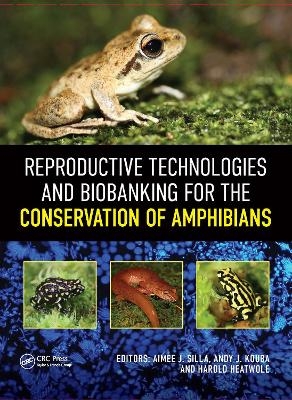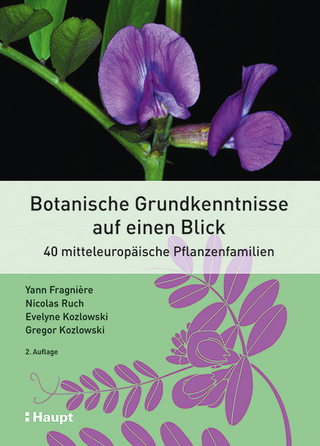
Reproductive Technologies and Biobanking for the Conservation of Amphibians
CRC Press (Verlag)
978-1-032-37207-5 (ISBN)
How to decelerate loss of global biodiversity is one of the greatest challenges of our generation. Reproductive technologies have enormous potential to assist the recovery of
species by enhancing reproductive output, facilitating genetic management, and supporting reintroduction of threatened species. Of particular value are cryopreservation technologies coupled with the establishment of global gene banks to conserve, in perpetuity, the remaining extant genetic diversity of threatened amphibians.
Reproductive Technologies and Biobanking for the Conservation of Amphibians brings together leading experts in the field to provide a comprehensive overview of current best
practices, summarise technological advancements, and present a framework for facilitating the integration of reproductive technologies and biobanking into conservation breeding
programs for threatened amphibians. It is an invaluable reference for the next generation of conservation practitioners: captive breeding facilities, researchers, and policy-makers
involved with biodiversity conservation
Aimee Silla is an Associate Research Fellow at the University of Wollongong where she has been co-head of the Evolution and Assisted Reproduction Laboratory (EARL) for the past 10-years. She earned her PhD from the University of Western Australia developing amphibian reproductive technologies. Through strategic partnerships with the NSW Department of Planning, Industry, and Environment, Zoos Victoria, and Taronga Conservation Society Australia, Dr Silla’s integrative research continues to have demonstrable impact on the recovery of threatened amphibian species. Andy Kouba is the Wildlife, Fisheries and Aquaculture Department Head at Mississippi State University (MSU), Executive Director of the Center for Human-Wildlife Interactions and Co-Director of the National Amphibian Genome Bank. He received a degree in Wildlife Ecology and Conservation from Northwest Missouri State University, a M.S. degree from Clemson University, and Ph.D. degree from the University of Florida. Prior to moving to MSU in 2015, Andy served as Director of Conservation/Research at the Memphis Zoo for 15 years. Harold Heatwole earned PhDs in Zoology (University of Michigan), Botany (University of Queensland) and Earth Science (James Cook University) and a DSc (University of New England). He held posts at the University of Puerto Rico, University of New England (Australia), and North Carolina State University, and was Editor of Integrative and Comparative Biology (Oxford University Press) for ten years. He conducts research on herpetology (especially seasnakes, and amphibians), biogeography, polar ecosystems, vegetation dynamics, and ecology of ants, tardigrades, and seabirds.
Integrating Reproductive Technologies into the Conservation Toolbox for the Recovery of Amphibian Species. Status of Global Amphibian Declines and the Prioritisation of Species for Captive Breeding. Methods of Identifying the Sex of Amphibians and of Conditioning Captive Brood Stock for Assisted Reproduction. Hormonal Control of Amphibian Reproduction. Non-invasive Monitoring of Stress Physiology during Management and Breeding of Amphibians in Captivity. Ultrasound Imaging to Assess Female Reproductive Status and Inform Hormonally Induced Ovulation. Protocols for Hormone-Induced Spermiation, and the Cold Storage, Activation, and Assessment of Amphibian Sperm. Genetic Management of Threatened Amphibians; using Artificial Fertilisation Technologies to Facilitate Genetic Rescue and Assisted Gene Flow. Cryopreservation of Amphibian Genomes: Targeting the Holy Grail, Cryopreservation of Maternal-Haploid and Embryonic-Diploid Genomes. Culturing and Biobanking of Amphibian Cell Lines for Conservation Applications. Linking in-situ and ex-situ Populations of Threatened Amphibian Species using Genome Resource Banks. Genome Resource Banks as a Tool for Amphibian Conservation.
| Erscheinungsdatum | 17.11.2022 |
|---|---|
| Zusatzinfo | 30 Illustrations, color; 50 Illustrations, black and white |
| Verlagsort | London |
| Sprache | englisch |
| Maße | 210 x 270 mm |
| Gewicht | 1040 g |
| Themenwelt | Naturwissenschaften ► Biologie ► Botanik |
| Naturwissenschaften ► Biologie ► Ökologie / Naturschutz | |
| Weitere Fachgebiete ► Land- / Forstwirtschaft / Fischerei | |
| ISBN-10 | 1-032-37207-9 / 1032372079 |
| ISBN-13 | 978-1-032-37207-5 / 9781032372075 |
| Zustand | Neuware |
| Informationen gemäß Produktsicherheitsverordnung (GPSR) | |
| Haben Sie eine Frage zum Produkt? |
aus dem Bereich


